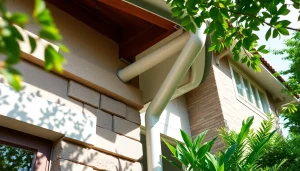Critical Insights on Electrical Panel Upgrades: When and Why You Should Consider It

Understanding Electrical Panel Upgrades
An electrical panel upgrade is a significant home improvement project that enhances your home’s ability to handle its electrical load more efficiently and safely. As homes evolve and the demand for electricity rises—thanks to the proliferation of devices, appliances, and electric vehicles (EVs)—modernizing your electrical panel becomes crucial. This article offers a comprehensive examination of when and why you should consider an electrical panel upgrade, focusing on signs that indicate the necessity for an upgrade, cost factors, and planning essentials for the project.
What is an Electrical Panel Upgrade?
At its core, an electrical panel upgrade involves replacing your existing electrical panel with a newer, more efficient model that can handle higher amperage levels. This can include moving from a 100-amp panel to a 200-amp panel, allowing for increased electrical capacity, greater safety, and better performance for all the electrical needs of modern living.
Importance of Upgrading Your Electrical Panel
The importance of upgrading your electrical panel cannot be overstated. A modern panel enhances the efficiency of your home’s electrical system, reduces the risk of electrical fires, and can significantly improve the value of your home. Moreover, a higher capacity panel is essential if you plan on adding new appliances, such as EV chargers, HVAC units, or even smart home technology.
How to Identify the Need for an Upgrade
Identifying when it’s time for an electrical panel upgrade is vital for safety and efficiency. Pay attention to the following signs that may indicate a need for upgrading:
Signs Your Home Needs an Electrical Panel Upgrade
Frequent Circuit Breaker Trips
If you find yourself continuously resetting circuit breakers or blowing fuses, this is a clear sign that your current panel is overloaded. Appliances and devices draw differing amounts of current, and an older panel might not be able to handle these demands efficiently.
Outdated Panel Types
Older panels, such as Federal Pacific or Zinsco panels, are notorious for safety issues and inefficiency. If your home has one of these outdated panels, engaging in an upgrade is a prudent decision to protect your home’s electrical system.
New Electrical Demands
With the introduction of electric vehicles, smart appliances, and advanced HVAC systems, the electrical load on households has significantly increased. If you are planning to add new electrical equipment or if your family is growing, now is the time to evaluate your panel’s capacity.
Cost Factors for Electrical Panel Upgrades
Estimated Costs Breakdown
The cost for upgrading an electrical panel can vary widely, typically ranging from $800 to $4,000. Factors influencing costs include panel specifications, the complexity of installation, local labor rates, and desired additional features.
Factors Influencing Upgrade Costs
Several specific factors can impact the cost of your upgrade, such as:
- Panel Size: Choosing between a 100-amp and a 200-amp panel will notably affect costs.
- Wiring Needs: Older homes often require new wiring that meets current safety standards, contributing to increased costs.
- Location: Costs can vary based on geographic location and demand for electrical services in your area.
Potential Savings and Rebates
Upgrading your electrical panel can lead to savings in electricity bills due to improved efficiency. Additionally, various programs may offer rebates or tax credits for home improvements that contribute to energy efficiency. For instance, the ENERGY STAR program provides incentives for upgrades made within a certain period, making the financial aspect of your project even more appealing.
Choosing the Right Electrical Panel
Types of Electrical Panels
There are several types of electrical panels you can choose from, including:
- Main Breaker Panels: The most common type, designed to control the entire home’s electrical supply.
- Main Lug Panels: Suitable for larger homes with master sub-panels.
- Subpanels: Essential for distributing electrical loads to various areas, especially in larger homes or those with significant electrical demands.
Capacity Requirements for Modern Homes
Most modern homes require at least a 200-amp panel to accommodate current electrical demands. This increased capacity allows homeowners to use multiple high-energy devices without overloading the system.
Professional vs. DIY Installations
While some homeowners may consider a DIY installation for their electrical panel upgrade, hiring a professional electrician is highly recommended. A licensed electrician ensures that the installation complies with local building codes and safety regulations, protecting you from potential hazards or future liability.
Planning Your Electrical Panel Upgrade
Steps to Prepare for an Upgrade
Preparation is critical for a smooth upgrade process. Follow these steps to ensure your project runs seamlessly:
- Assess Your Needs: Gather information about your current electrical usage and future needs to determine the right panel size.
- Consult a Professional: Engage with a licensed electrician to discuss your options and provide an estimate.
- Budget Appropriately: Consider all potential costs involved, including labor, materials, and additional charges for permits.
Finding the Right Contractor
Choosing the right contractor is crucial for a successful electrical panel upgrade. Ensure that you research local electricians, check references, and confirm their licensing and insurance credentials. Gathering multiple quotes can also help you compare services and prices efficiently.
Permitting and Code Compliance Essentials
Electrical work typically requires permits to meet local building codes. Your contractor should handle this process, ensuring compliance with necessary regulations and standards to maintain safety in your home and avoid complications during inspections.







